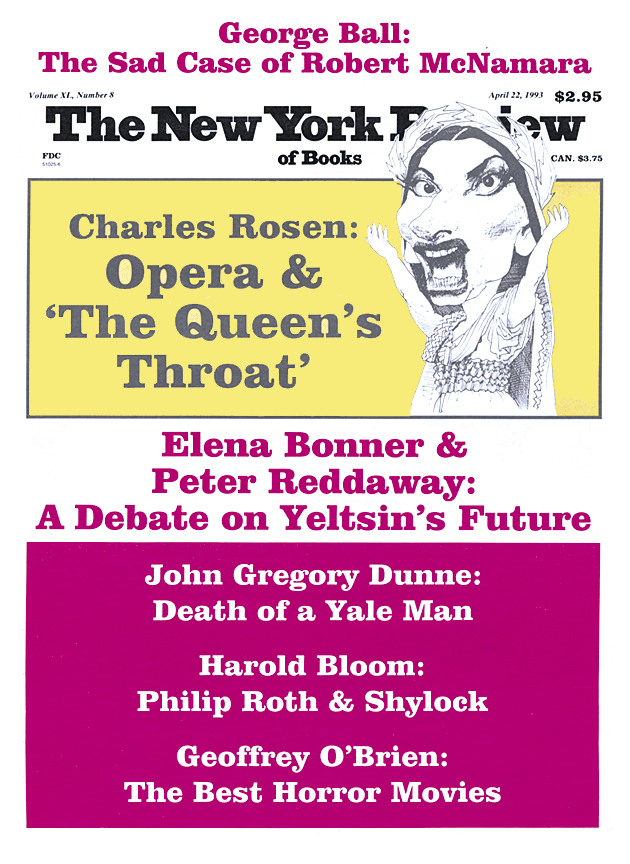Seventy-five thousand men, women, and children were killed in El Salvador’s ten years of civil war in circumstances uniformly atrocious, and invisibly of consequence to the game of nations. Peace at last prevails, blessedly if uneasily; and the United Nations, which could in no way restrain that decade’s dreadful course, has now undertaken at least to describe it. Its Commission on the Truth about El Salvador has now given us the fruit of six months of close study.
The Commission’s report is so far available only in Spanish and is hard going for the monolingual majority of Americans whose social standing qualifies them for opinions worth taking seriously. To defer the English translation may, of course, be an exercise of diplomatic tact, since it spares the feelings of those official Americans, past and present, who were at best guilty bystanders and at worst witting partners to these crimes.
The Truth as here set forth is heavily detailed and weighted with the authority of its sponsorship. Still there seems to be very little in its sweep not long ago revealed by Americas Watch and the Lawyers Committee for Human Rights, and insistently and scornfully rebutted by undersecretaries of defense, assistant secretaries of state, US ambassadors to El Salvador, and US ambassadors to the United Nations. We have once again found out that, when private Americans speak a truth, official Americans answer with a lie, a phenomenon as familiarly observed as it is habitually forgotten.
From the day in 1981 when Secretary of State Alexander Haig announced that he would “draw the line in El Salvador,” the United States dispatched $1.186 billion in military and $3.332 billion in economic aid, of which the army, as its country’s chief enterpriser, no doubt scooped up the largest bundle. The shiniest jewels of our benevolence were the Atacatl Battalion and the Special Investigative Unit (SIU). United States advisers trained both as models of American military and police practice. The budget for the SIU’s education went up to $7 million by 1987 and marvelously refined its professional skills for covering up in preference to unearthing war crimes.
A casual observer of the Atacatl Battalion’s resistance to the 1989 incursions of the guerrillas in San Salvador was lastingly impressed with the professionalism of its caution, not to say timidity, in confrontation with enemies who could shoot back. But show the Atacatl unarmed civilians and it could leap like a tiger, and at El Mozote, by the Truth Commission’s exhumatory count, it butchered at least 143 defenseless persons, 131 of them children. The US embassy investigated this event and reported that “none of the tested sources…has given us even a hint of massive civilian casualties.”
But then our ambassadors were steadfastly stingy about giving the Atacatl the credit due its triumphs. When one of its units accomplished the murder of six Jesuit priests, their house-keeper, and her daughter in 1989, US Ambassador William Walker said that anyone could have done it.
Ambassador Walker had lamentably undervalued the discipline of Col. Rene Emilio Ponce, the army chief of staff, who, the Truth Commission tells us, probably ordered his troopers to kill the Jesuit Ignacio Ellacuria, rector of the Central American University, and all witnesses present, then personally supervised the destruction of evidence, and finally ordered the enlisted men who took the fall not to plead obedience to directions by their superiors. It was through such prodigies that Ponce ended up as El Salvador’s minister of defense.
The Truth Commission is scrupulous, as Americas Watch has always been, in calling attention to guerrilla atrocities. The difference is that rebel excesses were not bought and paid for by the United States. And would it have mattered a jot for the collapse of communism since if we hadn’t bothered to draw the line in El Salvador? Of course not. America had simply thrown away its honor for a nullity and will do it again when fantasy crooks her finger.
This Issue
April 22, 1993


